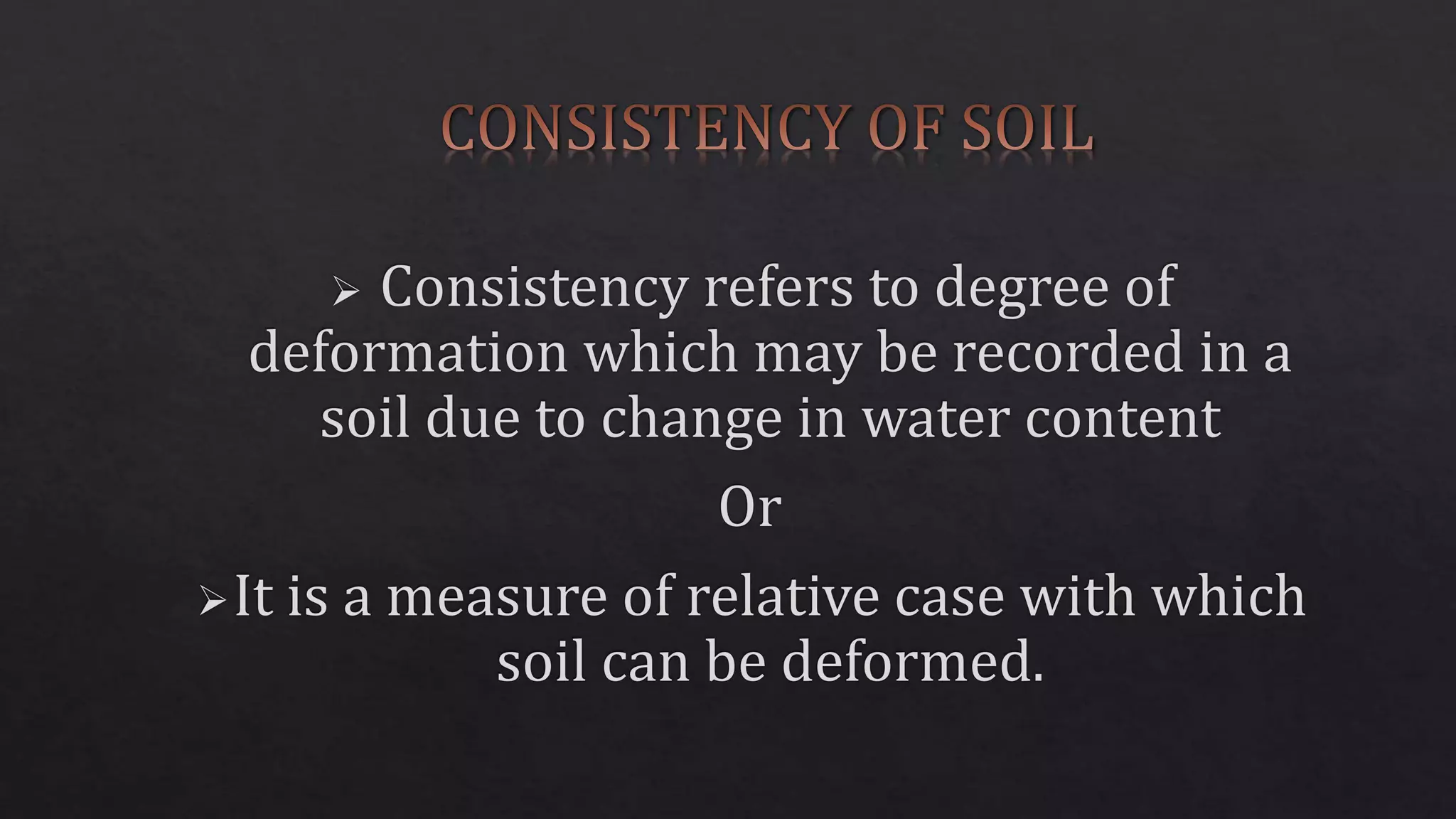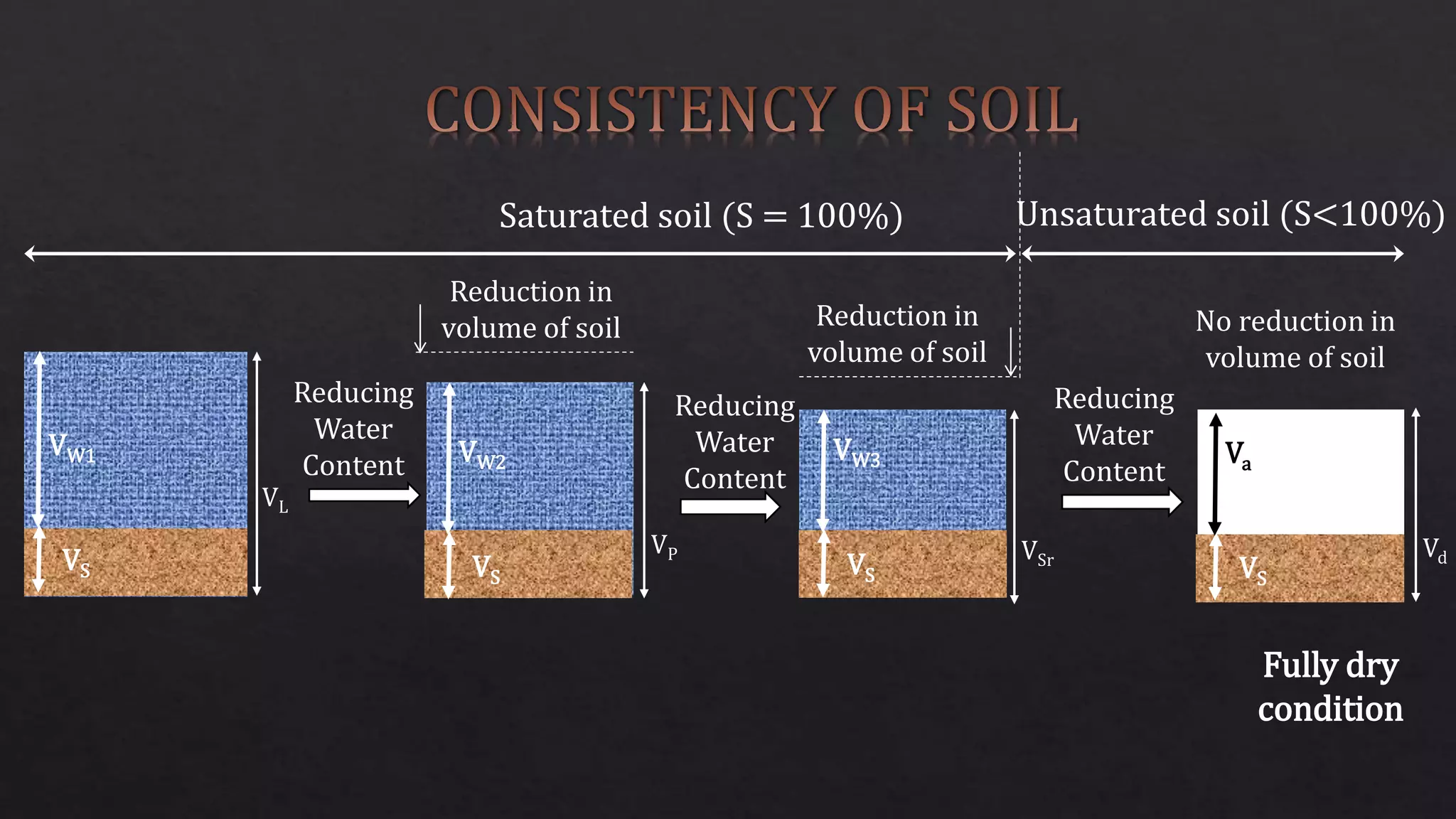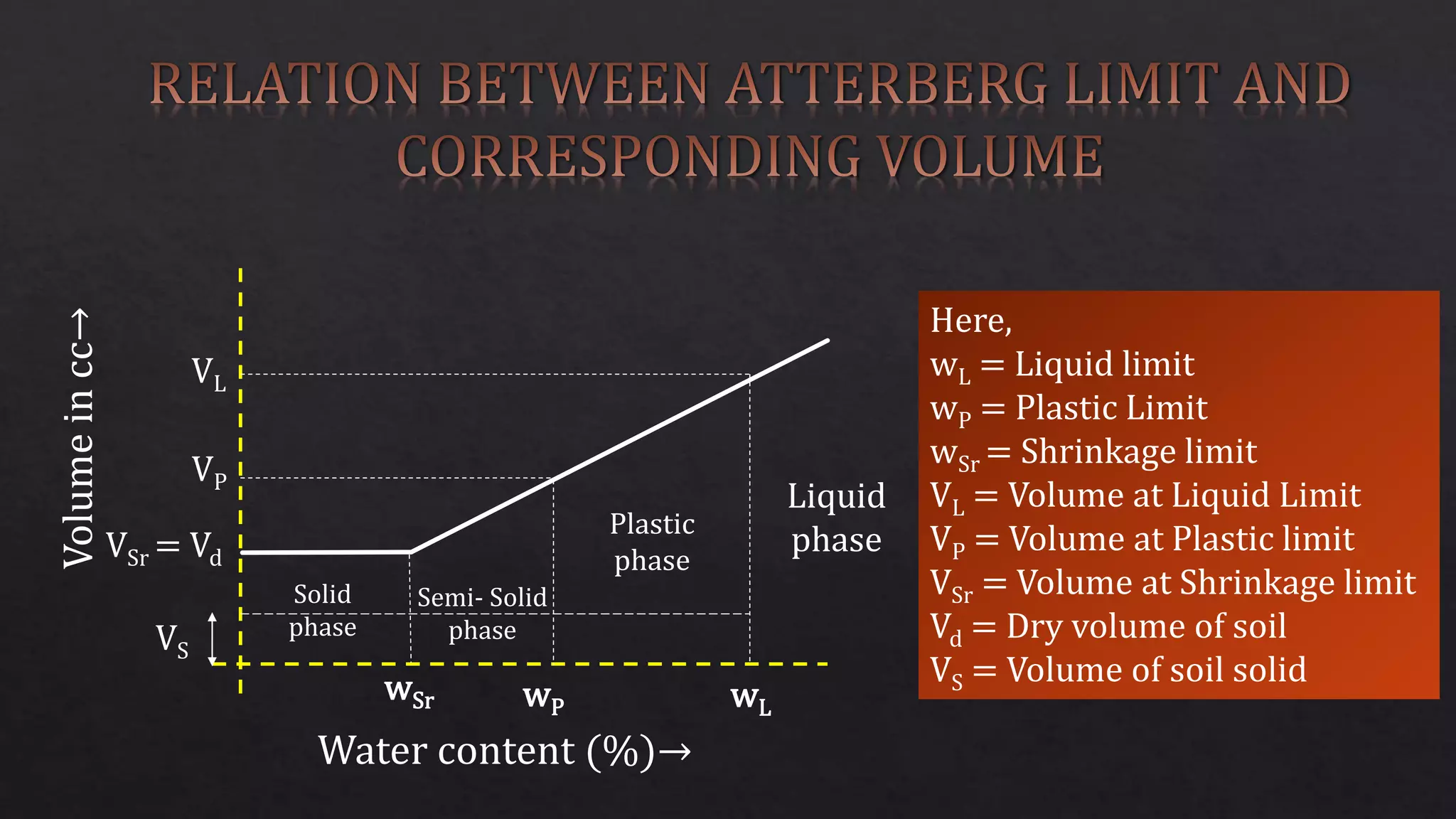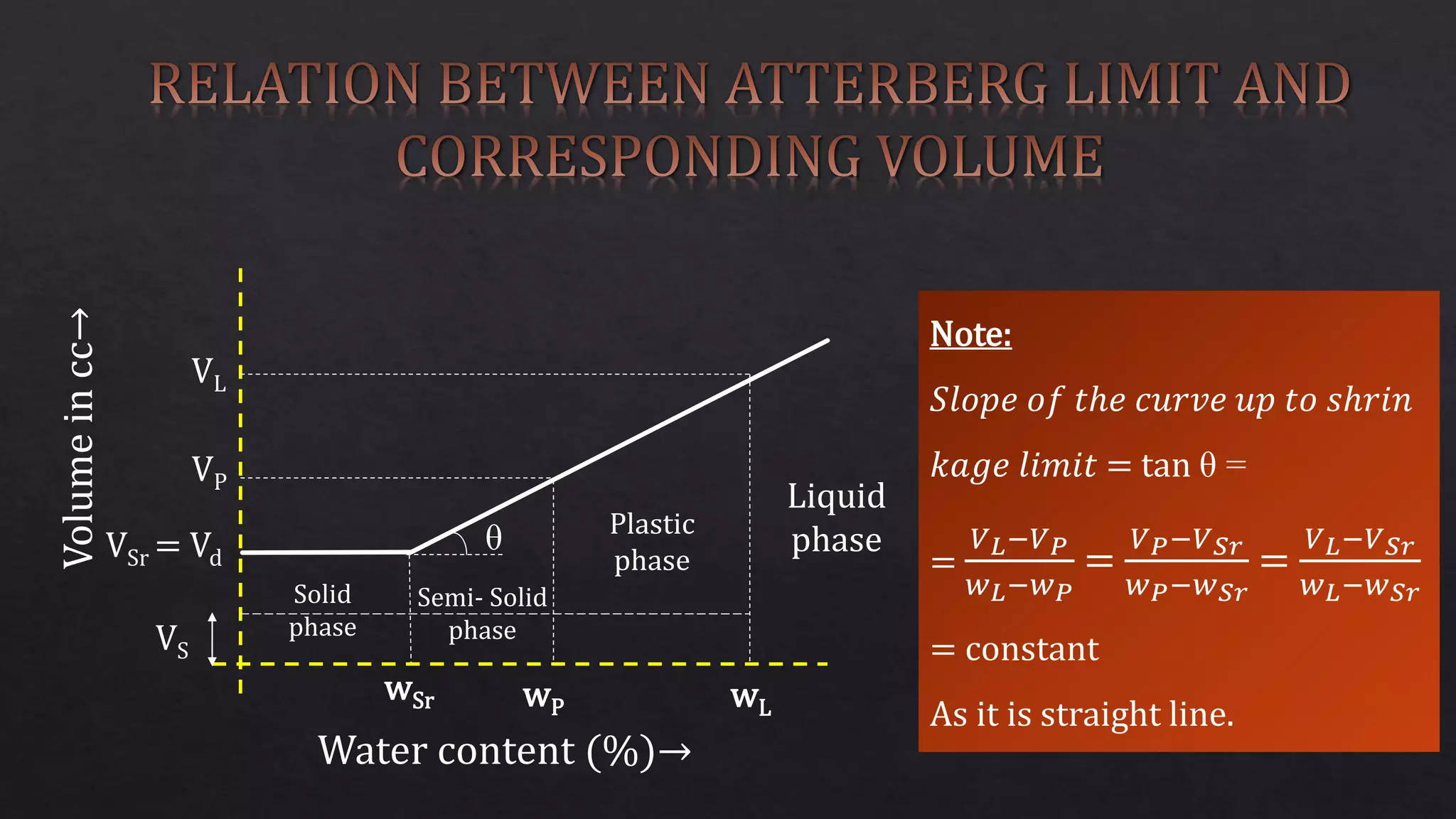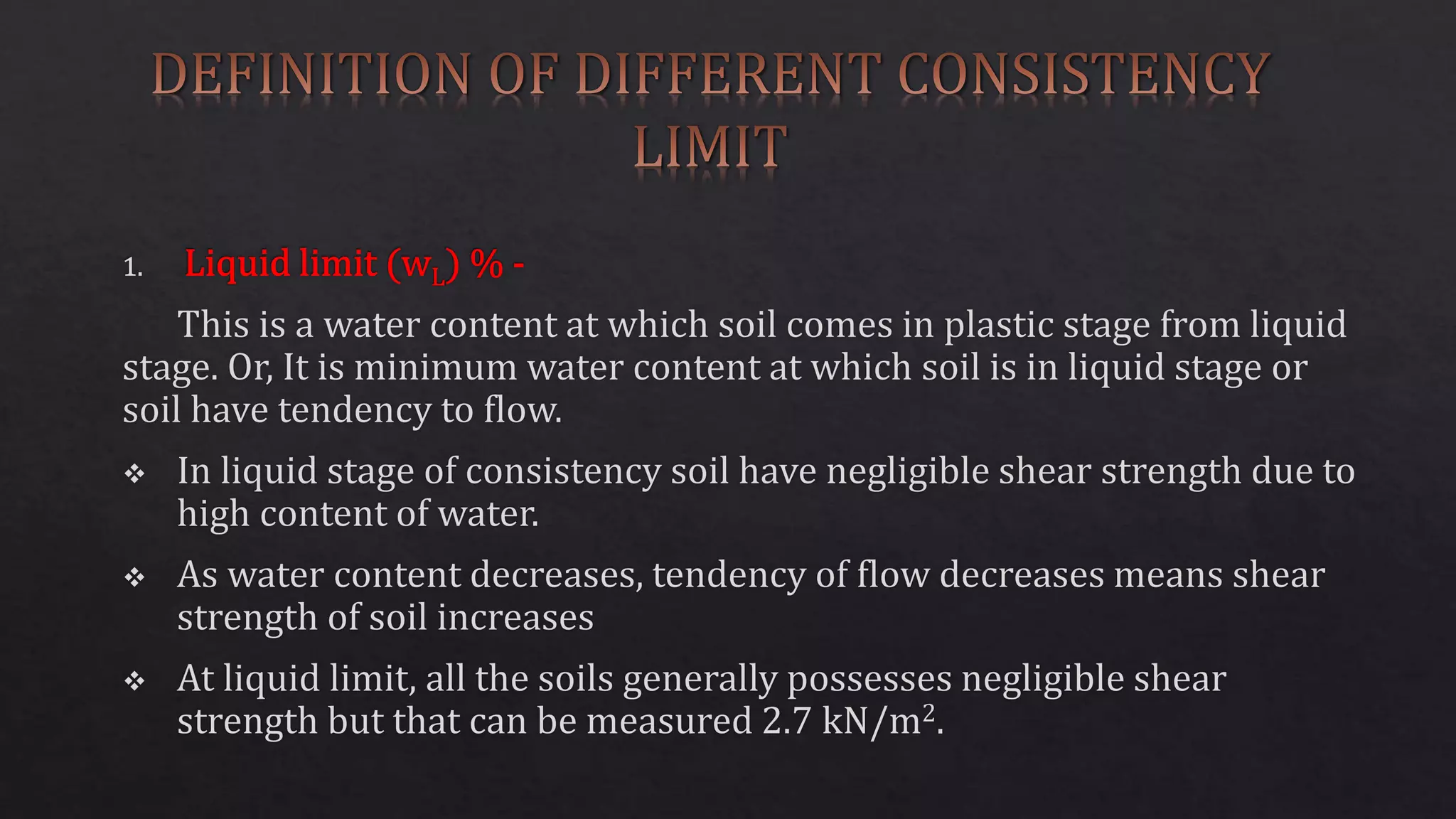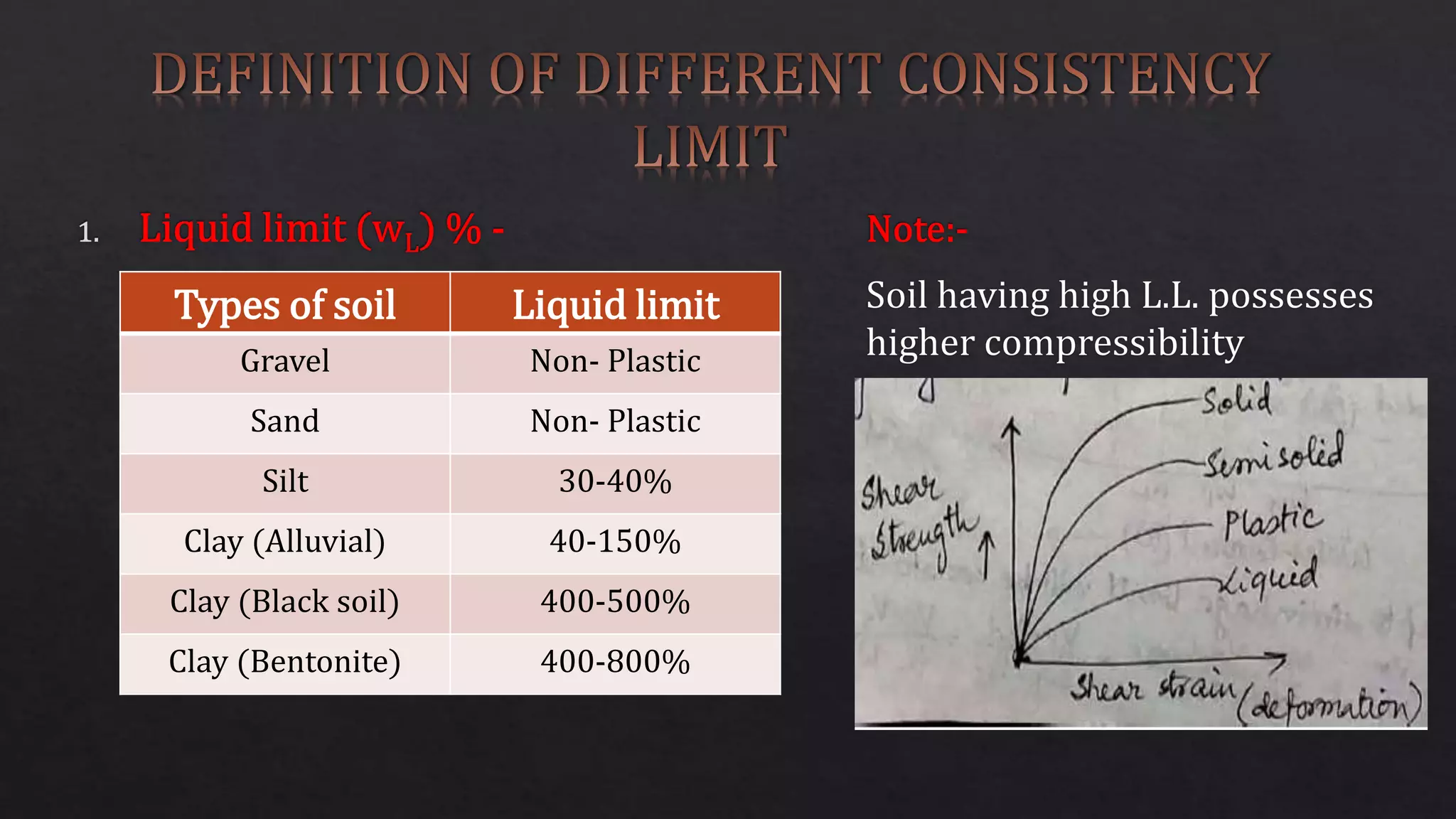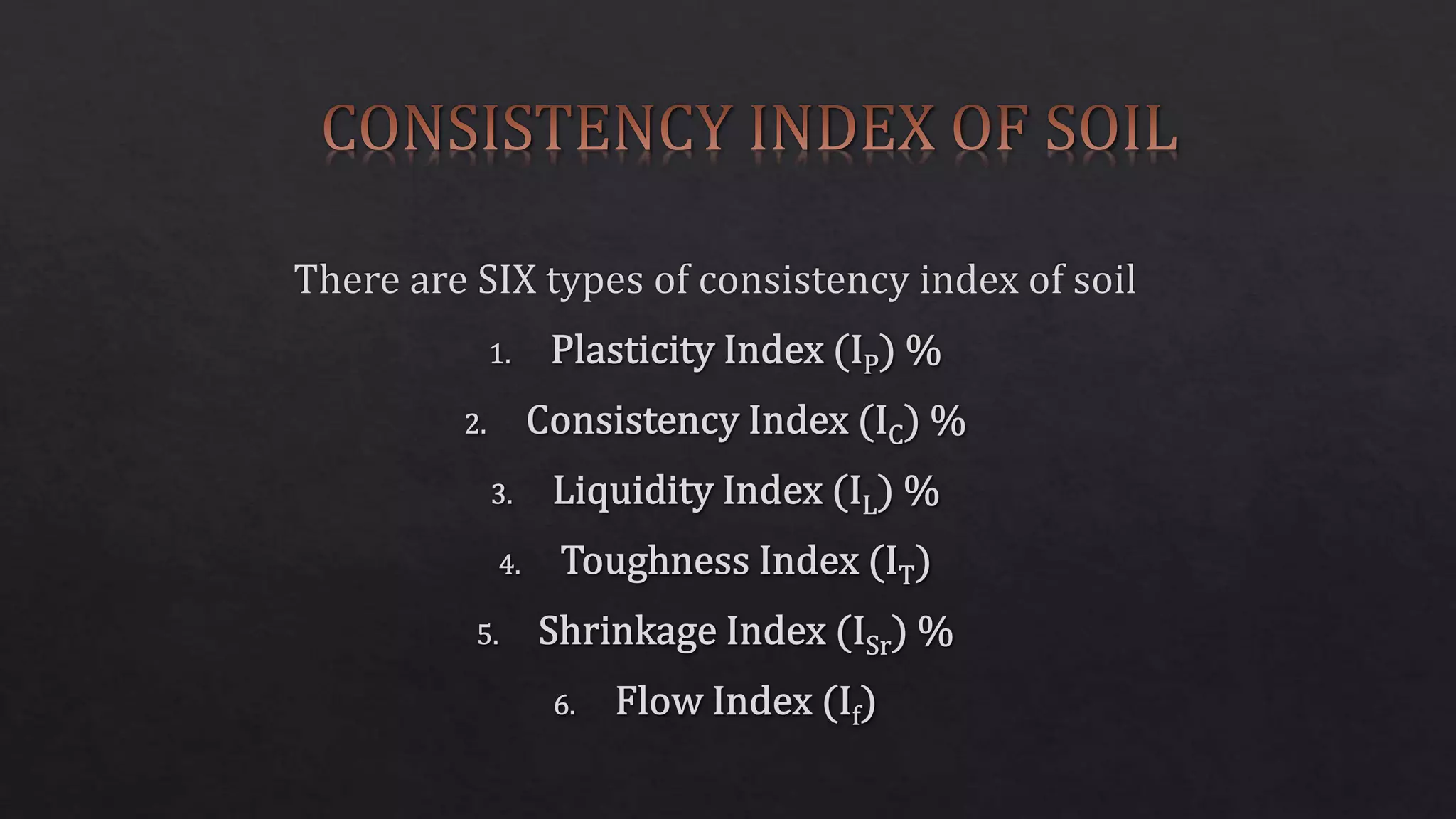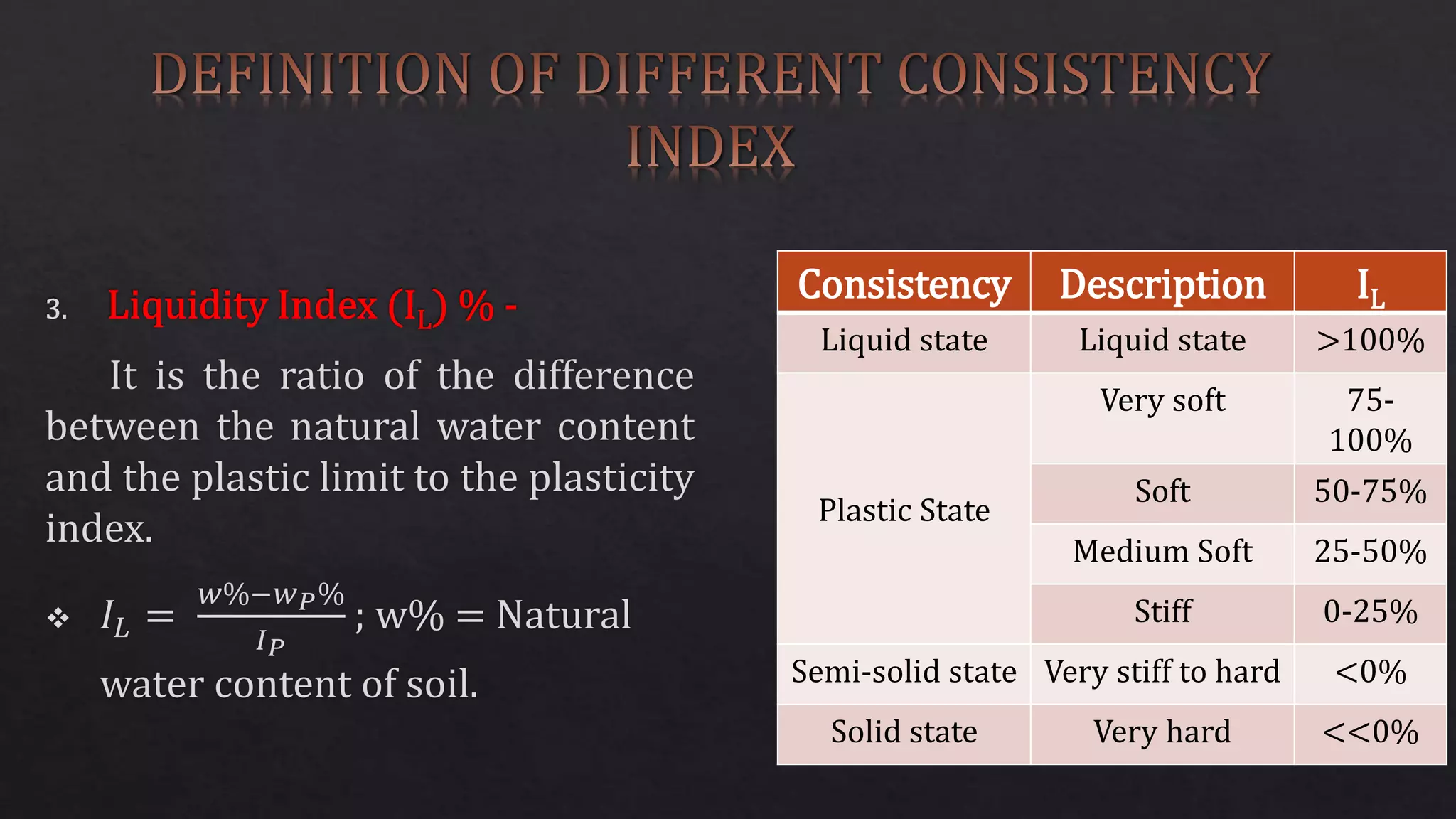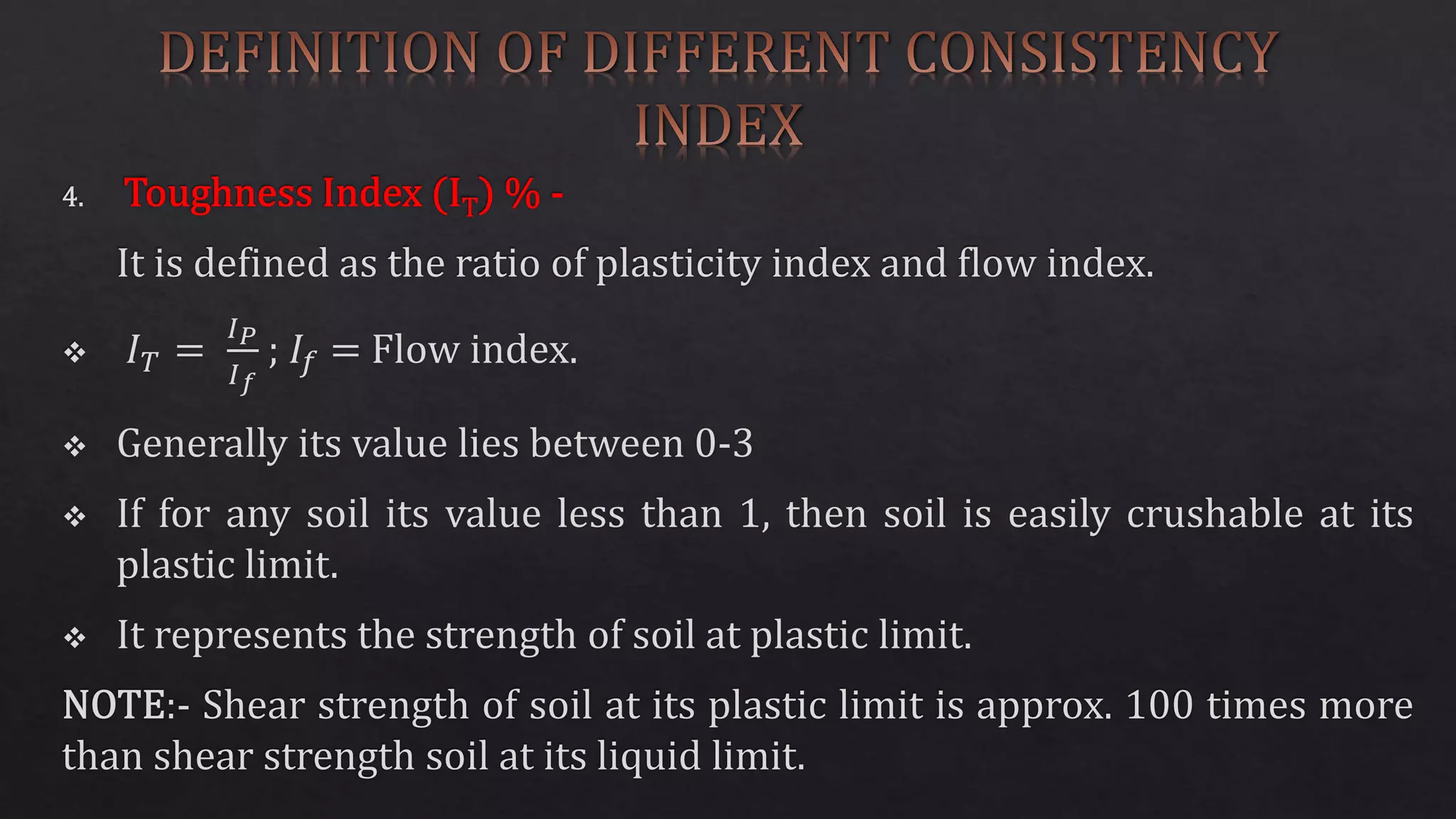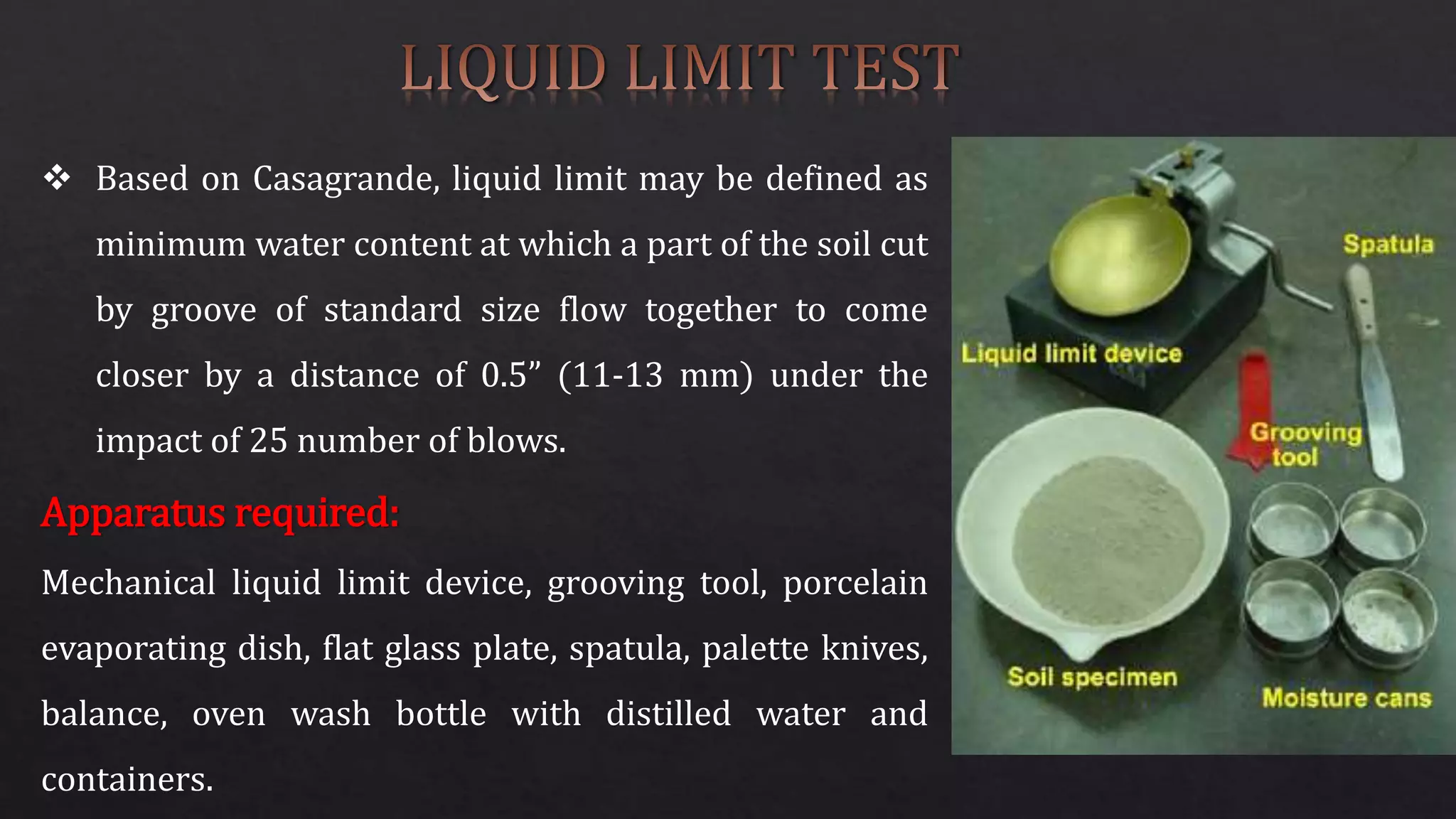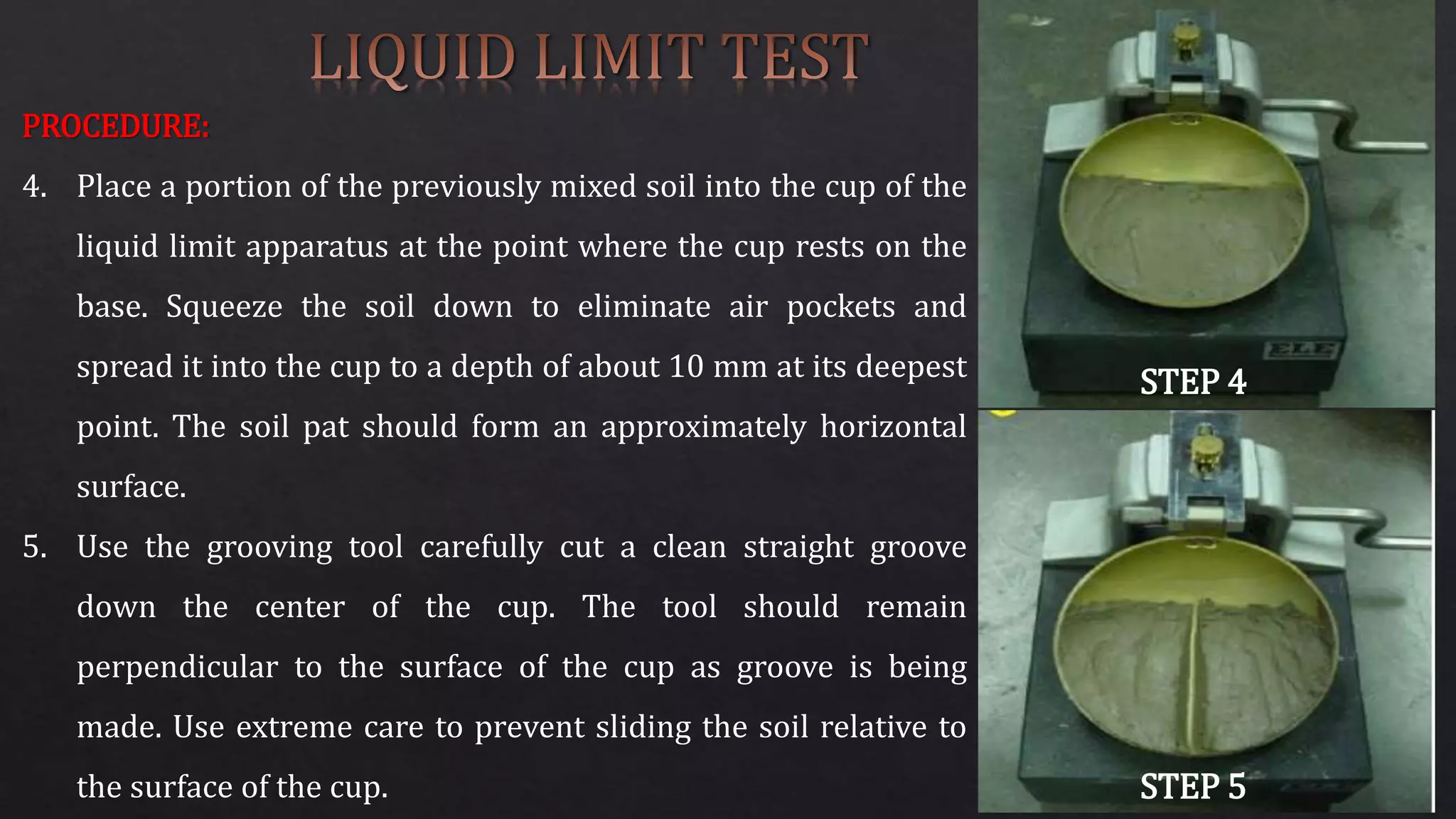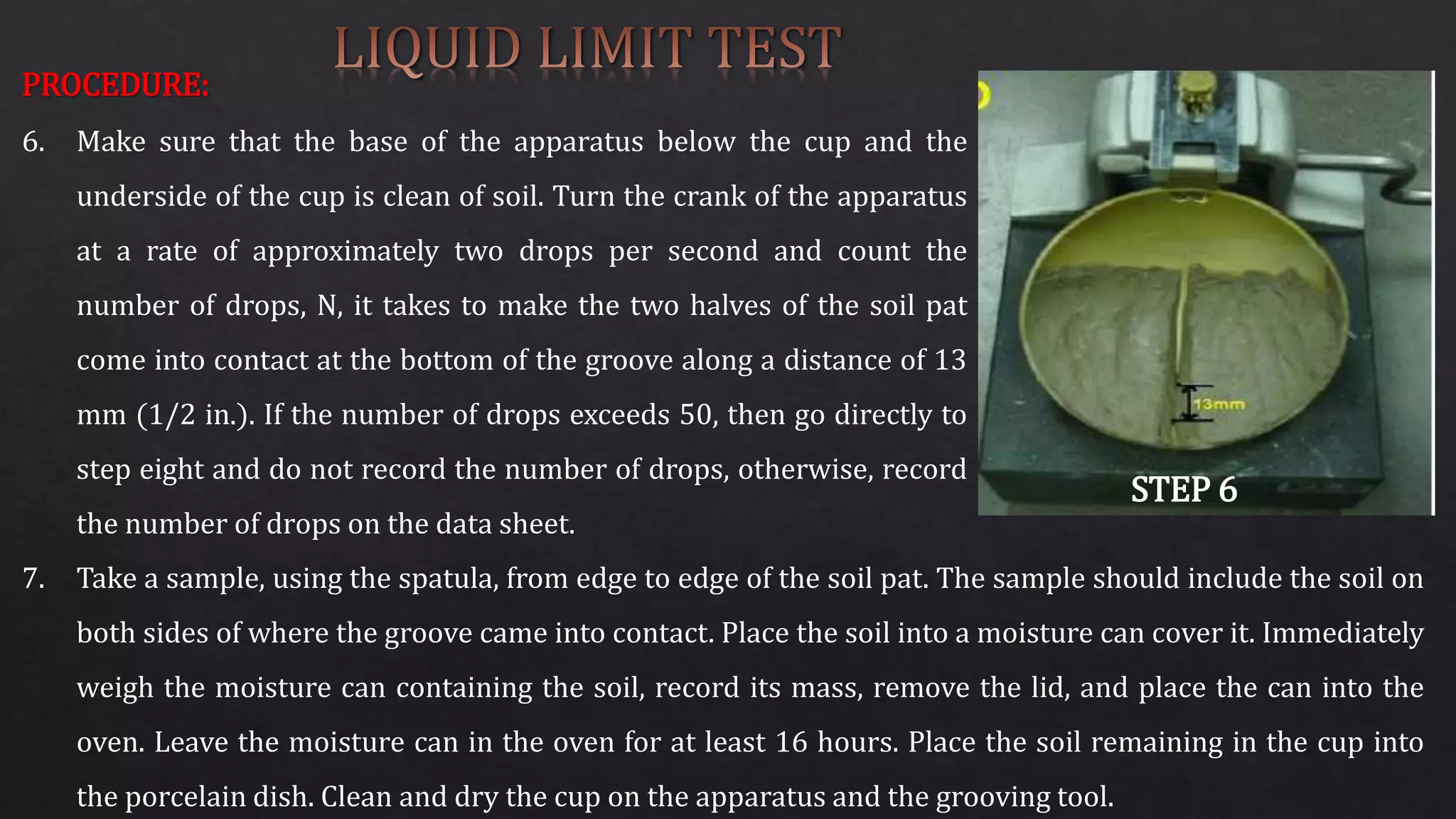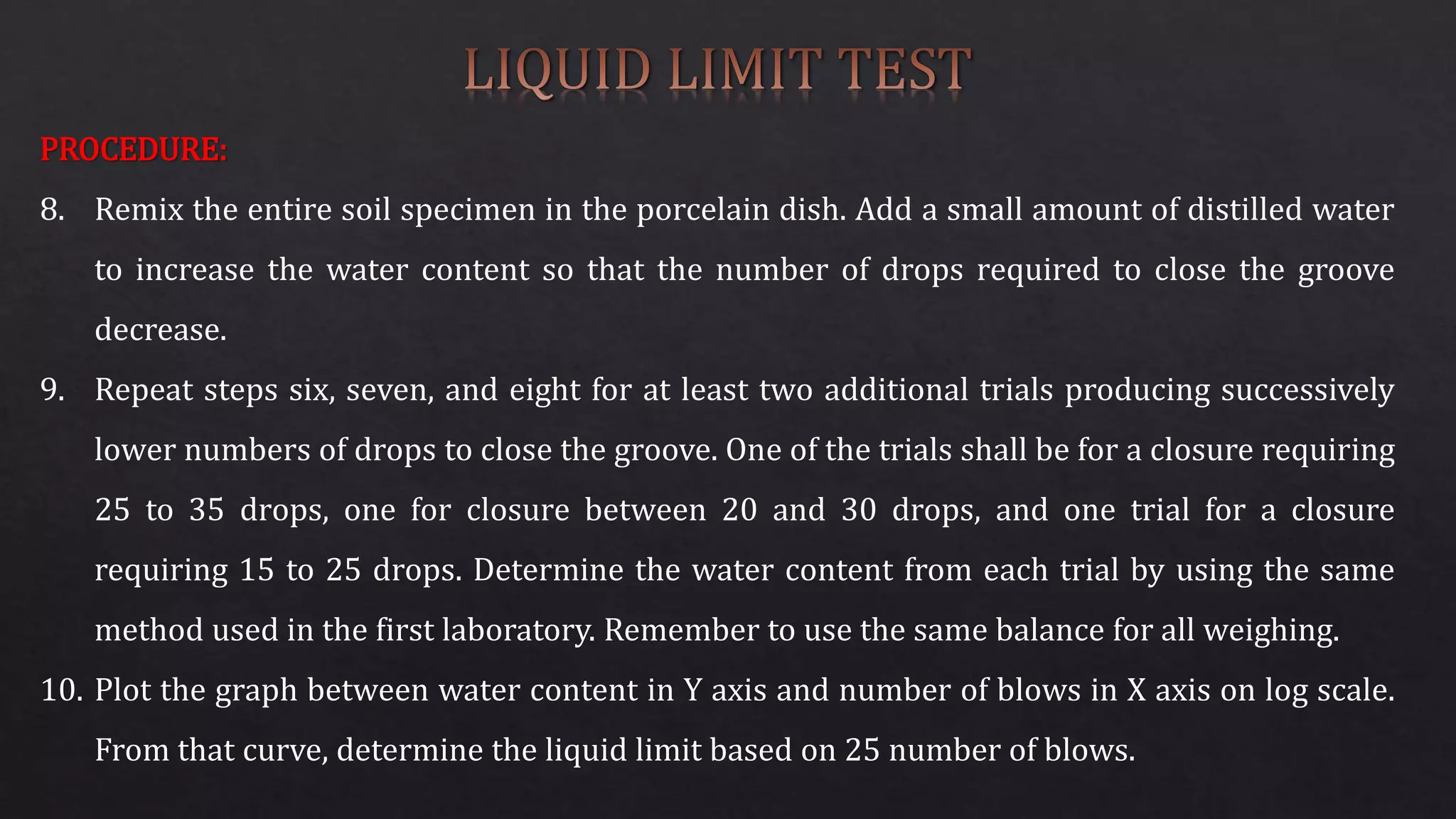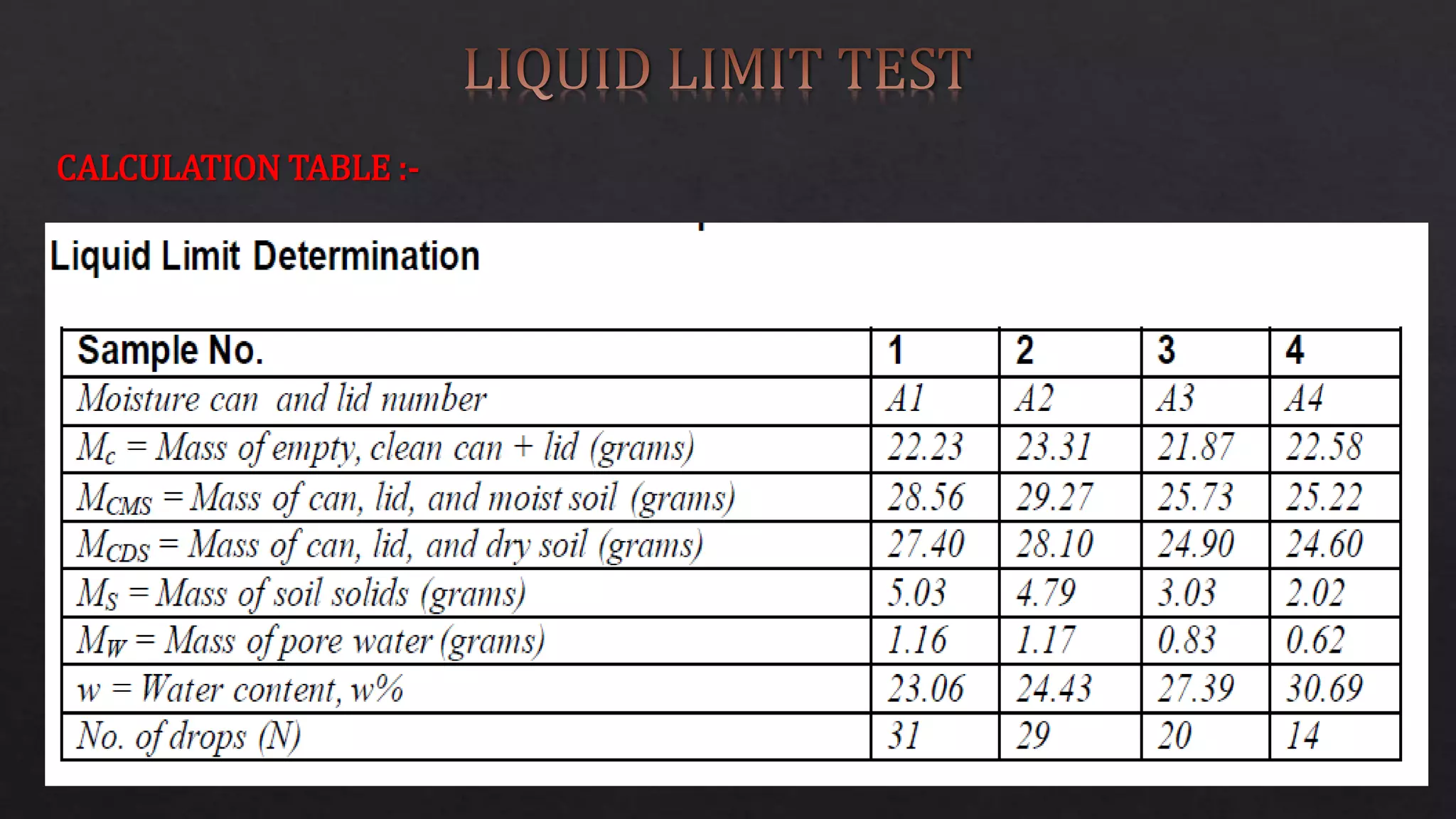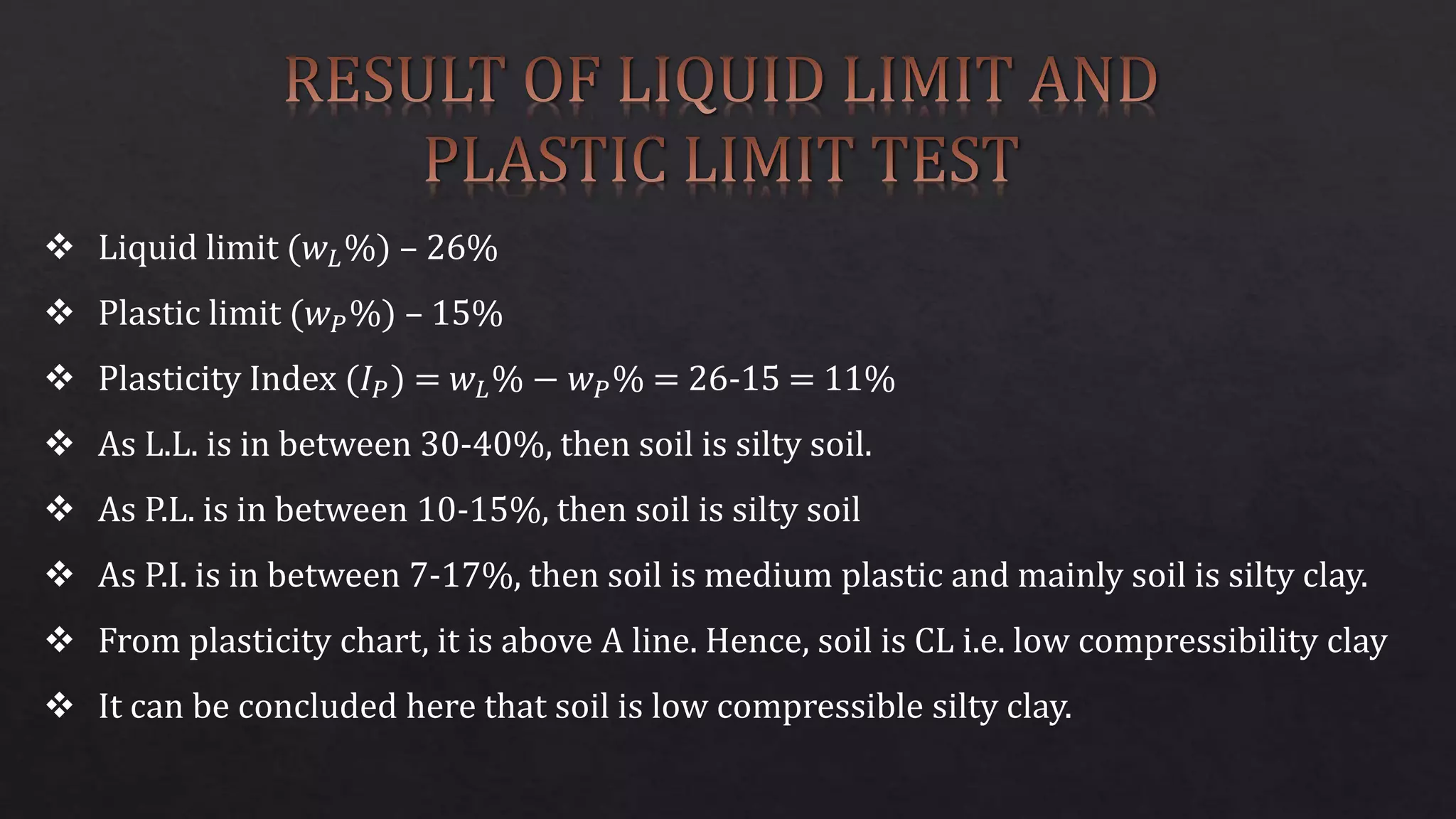This document discusses procedures for determining the liquid limit and plastic limit of fine-grained soils through laboratory tests. The liquid limit is defined as the minimum water content at which a soil pat will flow together over a distance of 13mm under 25 blows. The plastic limit is the minimum water content at which a 3mm thread of soil will just start cracking. Test results for a sample soil show a liquid limit of 26%, plastic limit of 15%, and plasticity index of 11%, identifying it as a low compressibility silty clay soil.

